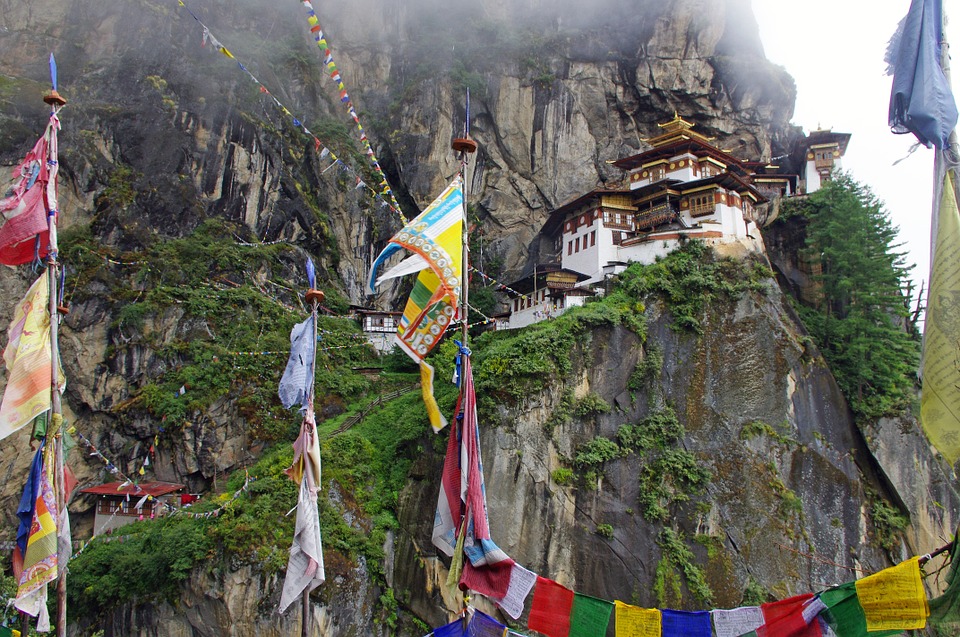
Although tropical deforestation is still widespread, reforestation is observed in several tropical countries, mostly in marginal lands including mountain environments. With its long tradition of environmental conservation and its rich and abundant forests, the mountainous kingdom of Bhutan is often presented as a model of forest protection.
The Bhutanese government has defined environmental sustainability as one of the four pillars of its unique philosophy of development — the pursuit of the Gross National Happiness. Bhutan is widely considered as one of the few tropical countries which could have recently experienced a forest transition, i.e., a shift from net loss to a net increase of forest cover. Yet, with the isolation of the country, administrative barriers for foreign researchers, and technical difficulties such as the very rugged topography and persistent cloud cover, the actual trends in forest dynamics and the effectiveness of Bhutanese environmental governance remained quite uncertain.
In order to shed light on whether the strong dedication of the Bhutanese government towards nature conservation was indeed effective in conserving the country’s forests, we first used advanced remote sensing techniques to assess whether such a forest transition did indeed take place in Bhutan (1). We showed that over 1990-2011, forest cover in Bhutan remained very stable, with a forested area covering more than 60% of the country, and remarkably small gross and net forest cover changes. We also analyzed how these changes in forest cover could partly be explained by socio-economic and political changes associated with the gradual opening of the country to trade, which induced a transition from subsistence shifting cultivation to market-oriented agriculture and increasing imports of wood products from India (2).
With this background, we turned our attention to the specific policies regulating forest uses in Bhutan. A substantial share of the Bhutanese forests is dedicated to nature conservation, with an extensive protected area network connected by biological corridors. Yet, agriculture and forestry also provide an essential basis for the economy. Subsistence and commercial agriculture are widespread throughout the country, and forestlands are partly allocated to timber production, including forest management units subjected to strict regulations.
To assess the effectiveness of these various land-use zoning units to protect forest cover, we first had to overcome what is known as “selection biases,” or location biases. Land zoning units such as protected areas are not located randomly in the landscapes but tend to be concentrated on areas that are less accessible, further away from human activities, and generally on land less suitable for agriculture or forestry activities such as those with a harsh climate, steep slopes, and poor-quality soils. This is known as the “high and far” bias in the location of protected areas. This means that protected areas and other units zoned for forestry tend also to have less human pressure and deforestation risk. A simple comparison of the rates of deforestation and reforestation in units zoned for protection or forestry versus those available for agriculture would thus likely show that protected areas have lower deforestation rates, but this could be due to their location bias instead of their actual effectiveness in regulating human activities.
We thus used a matching procedure to control for these location biases. This procedure starts by selecting a sample of points in the areas that are under different forms of land use zoning. These are called the “treated” points. The matching algorithm then searches for points that are outside of the land use zoning areas, and matches each “treated” point with an “untreated” point which is otherwise similar in all observable characteristics that may affect both the zoning status and land use changes (e.g., both points would have the same climatic conditions, distance to human settlements, and so on). Comparing the rates of deforestation and reforestation in these two samples provided unbiased estimations of the impact of the different types of land use zoning on forest cover changes during the 2000s. We also investigated subsets of the protected area network to test for effectiveness heterogeneities within this network.
Our results showed that protected areas prevented 63% of the forest loss expected in forestlands under this protection status. These units also curtailed forest gain. Long-established protected areas were more effective at preventing forest loss than recent areas, while the levels of stringency and operationality of protected areas had no differentiable impact on forest loss. We detected more forest loss in forests surrounding protected areas compared to more distant forestlands, showing a leakage effect, and biological corridors had no impact on forest loss and gain. Forest management units cut forest loss in half. Taking bias into consideration, this study thus demonstrated the effectiveness of land use zoning for forest conservation in Bhutan.
These findings are described in the article entitled Impact of land-use zoning for forest protection and production on forest cover changes in Bhutan, recently published in the journal Applied Geography. This work was conducted by Derek Bruggeman and Patrick Meyfroidt from the Université Catholique de Louvain, and Eric F. Lambin from the Université Catholique de Louvain and Stanford University.
References:
- Bruggeman D, Meyfroidt P, Lambin EF (2016). Forest cover changes in Bhutan: Revisiting the forest transition. Applied Geography, 67, 49-66 (2016). https://dx.doi.org/10.1016/j.apgeog.2015.11.019
- Jadin I, Meyfroidt P, Lambin EF (2016). Forest protection and economic development by offshoring wood extraction: Bhutan’s clean development path. Regional Environmental Change, 16(2), 401-415, https://dx.doi.org/10.1007/s10113-014-0749-y
- Bruggeman D., Meyfroidt P., Eric Lambin E.F. (2018). Impact of land-use zoning for forest protection and production on forest cover changes in Bhutan. Applied Geography, 96, 153-165, https://doi.org/10.1016/j.apgeog.2018.04.011









